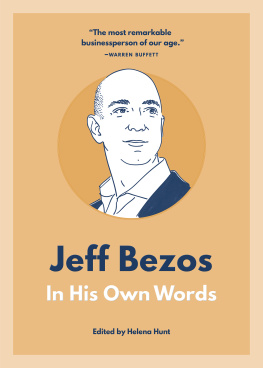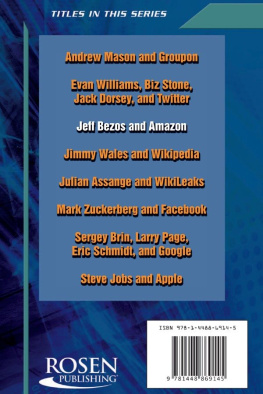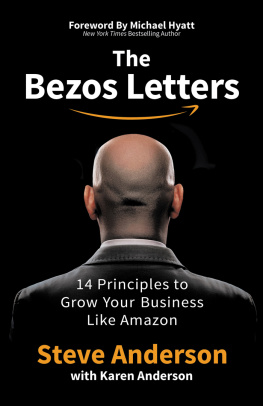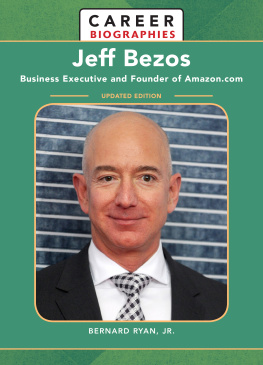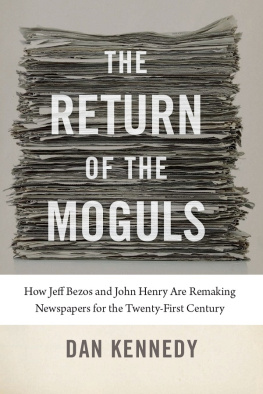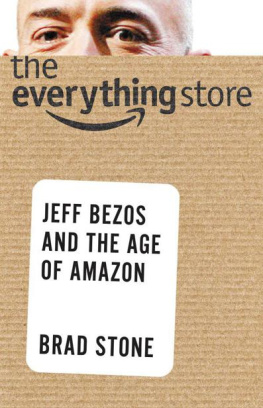Table of Contents
PORTFOLIO / PENGUIN
Published by the Penguin Group
Penguin Group (USA) Inc., 375 Hudson Street, New York, New York 10014, U.S.A. Penguin Group (Canada), 90 Eglinton Avenue East, Suite 700, Toronto, Ontario, Canada M4P 2Y3 (a division of Pearson Penguin Canada Inc.) Penguin Books Ltd, 80 Strand, London WC2R 0RL, England Penguin Ireland, 25 St. Stephens Green, Dublin 2, Ireland (a division of Penguin Books Ltd) Penguin Books Australia Ltd, 250 Camberwell Road, Camberwell, Victoria 3124, Australia (a division of Pearson Australia Group Pty Ltd) Penguin Books India Pvt Ltd, 11 Community Centre, Panchsheel Park, New Delhi110 017, India Penguin Group (NZ), 67 Apollo Drive, Rosedale, Auckland 0632, New Zealand (a division of Pearson New Zealand Ltd) Penguin Books (South Africa) (Pty) Ltd, 24 Sturdee Avenue, Rosebank, Johannesburg 2196, South Africa
Penguin Books Ltd, Registered Offices:
80 Strand, London WC2R 0RL, England
First published in 2011 by Portfolio / Penguin,
a member of Penguin Group (USA) Inc.
Copyright Richard L. Brandt, 2011
All rights reserved
LIBRARY OF CONGRESS CATALOGING IN PUBLICATION DATA
Brandt, Richard L.
One click : Jeff Bezos and the rise of Amazon.com / Richard L. Brandt.
p. cm.
ISBN : 978-1-101-51623-2
1. Bezos, Jeffrey. 2. Booksellers and booksellingUnited StatesBiography. 3. BusinessmenUnited StatesBiography. 4. Amazon.com (Firm)History. 5. Internet bookstoresUnited StatesHistory. 6. Electronic commerceUnited StatesHistory. I. Title.
Z473.B47B75 2011
381.4500202854678dc23
[B] 2011019057
Without limiting the rights under copyright reserved above, no part of this publication may be reproduced, stored in or introduced into a retrieval system, or transmitted, in any form or by any means (electronic, mechanical, photocopying, recording or otherwise), without the prior written permission of both the copyright owner and the above publisher of this book.
The scanning, uploading, and distribution of this book via the Internet or via any other means without the permission of the publisher is illegal and punishable by law. Please purchase only authorized electronic editions and do not participate in or encourage electronic piracy of copyrightable materials. Your support of the authors rights is appreciated.
http://us.penguingroup.com
To Kim and Leila, for everything.
To Al Zuckerman, for being a great agent.
To Courtney Young, for being a great editor.
And to the memory of Lindy Howe, who always had faith in me.
Chapter 1
One Click Is Not Enough
To be Earths most customer-centric company where people can find and discover anything they want to buy online.
Amazon.com Mission Statement
O n September 22, 1994, two months after incorporating Amazon.com and ten months before launching the company, Jeff Bezos decided to learn how to sell books. So he took a course on how to start a bookstore, sponsored by the American Booksellers Association. Some forty to fifty aspiring booksellers, from young people starting out to retired couples thinking about a second career, attended the four-day course at the Benson Hotel in Portland. They sat through courses on topics such as bookstore financial operations, customer service, and handling inventory. One of the instructors was Richard Howorth, owner of Square Books in Oxford, Mississippi.
Howorth is a fanatic about customer service (which happens to be the only way to compete with Amazon.com and the chain stores to this day). To emphasize the importance of service, he related the story of his most extreme example of taking care of a customer.
One of the stores managers walked into Howorths upstairs office to tell him a customer had a complaint. Howorth strolled downstairs to find out what the problem was. The customer angrily told him that she had parked her car in front of the store, and dirt from potted plants on the stores balcony had somehow fallen on her car. So Howorth offered to wash her car for her. They climbed into her car and drove to a service station with a car wash. But the service station was closed for repairs. She became more irate. Howorth then suggested they drive to his house, where he collected a bucket, soap, and a hose and washed the car himself.
As she drove him back to the store, her attitude changed. She became downright pleasant. In fact, she came back to the store later that afternoon and bought a bunch of books.
Bezos later told an executive at the American Booksellers Association that he was impressed with the story and was determined to make customer service the cornerstone of Amazon.com. Bezos considered it his most important weapon. We know that if we can keep our competitors focused on us, while we stay focused on the customer, that ultimately well turn out all right, he has said.
Interestingly, Jeffs idea of customer service is different than that held by Howorth, who says personal, face-to-face service with the customer is whats most important. In the Internet game, customer service is mostly done by unemotional computers. Ill bet he hasnt washed a customers car, Howorth says of Bezos, perhaps with just a touch of bitterness.
In fact, for all his professed dedication to serving the customer, Bezoss obsession seems to be restricted to building an incredible Web site and to making sure deliveries arrive when promised. Its hard to even find a customer service number on Amazon.com. Bezos wants everything to be done via email. Amazons customer service started with Bezos himself answering the emails, and by 1999 was manned by five hundred of these customer care representatives packed into cubicles and tied to their telephones and email accounts to answer questions from customers.
The people handling these emails are generally overqualified, underpaid people with no experience in bookselling. From the beginning, disaffected academics were popular because they were well-read and could supposedly help find books on a huge variety of topics. They were paid about $10 to $13 an hour, but with the potential of promotions and stock options dangled before their glazed eyes.
Not everyone found Nirvana in this environment. Richard Howard, for example, has a masters degree in literature but decided to take the entry-level customer care job at Amazon in 1998 with hopes of moving into Editorial, where he could write reviews of books. What he found was a work mill with four Customer Service Tier 1 E-Mail Representatives to a cubicle. Supervisors listened in on calls to monitor performance, and rated the workers by how many emails or phone calls they could answer per minute.
Howard chronicled his experience for a Seattle newspaper in an article titled How I Escaped from Amazon.cult.
Human interaction was treated almost as a necessary evil. Howard was given a Blurb Index, a list of hundreds of short, canned answers to cover virtually any question a customer might ask, which he felt were designed to create a blandly conventional zone of contact between [Amazons] agents and customers.








